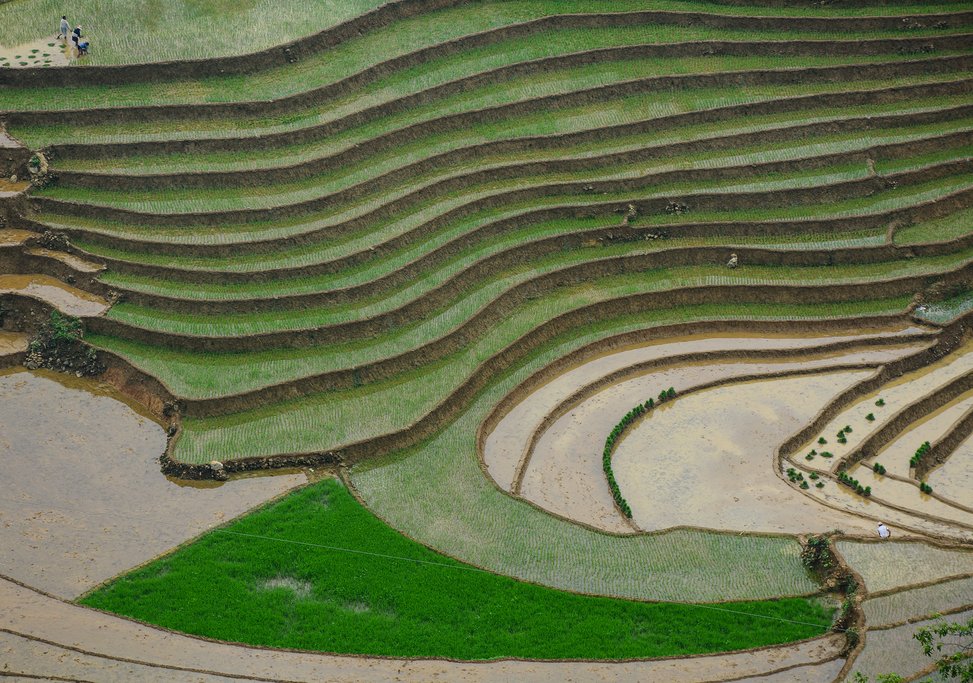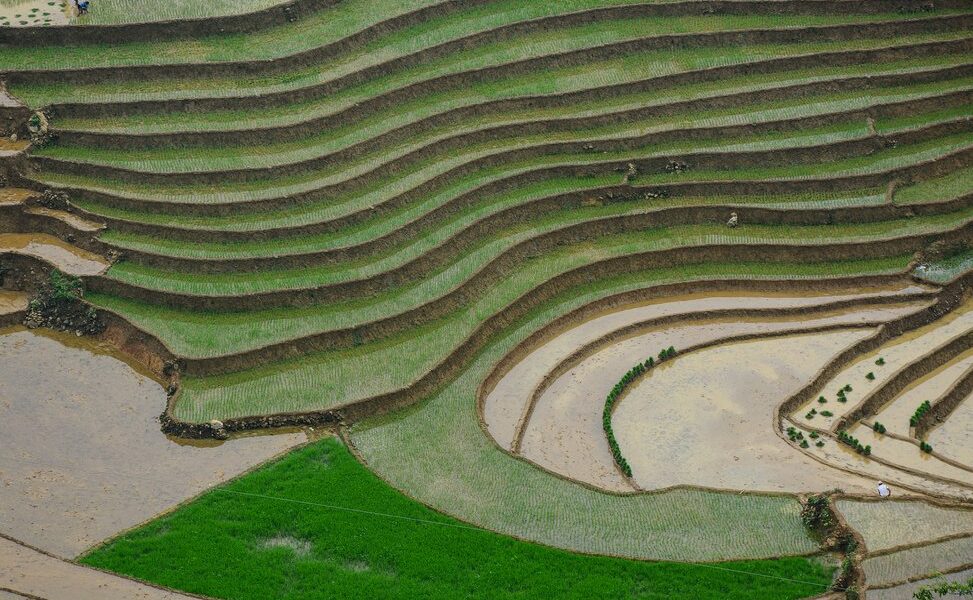
Myanmar has three main seasons: the cool, the hot, and the rainy. Planning your visit around these seasons can help you get the most out of your visit. Each season offers its own unique experience, along with numerous annual festivals where you can enjoy this historic, fascinating, and energetic country.
Understanding the Enthralling Seasons of Myanmar
Myanmar, a captivating nation nestled in the heart of Southeast Asia, boasts a tropical climate significantly influenced by the rhythmic dance of the annual monsoon patterns. The tapestry of temperatures and rainfall levels is woven by the distinct seasons, further diversified by the variations in altitude between the highland and lowland regions. As a general observation, the northern, mountainous territories tend to experience the coolest temperatures, while the delta and coastal areas are often graced with the highest rainfall.
While Myanmar might have remained somewhat under the radar for the typical tourist radar for some time, it possesses a remarkably consistent climate, a feature that adds to its allure. Similar to many of its equatorial Asian counterparts, Myanmar essentially experiences two primary seasons: the dry season and the rainy season. However, the dry season can be further refined into two sub-seasons: the cool season and the hot season, thus presenting a total of three unique seasonal experiences.
With its inviting temperatures, reduced rainfall, and a vibrant calendar of festivals, the dry season emerges as an exceptionally opportune time to explore the wonders of Myanmar. Regions such as Bagan, Mandalay, and other parts of the central plains are typically spared from the rain during this period. If your travel plans encompass multiple regions of Myanmar, the reliability of the dry season makes your journey significantly smoother and more predictable.
The Alluring Cool Season (November to February)
The cool season in Myanmar is widely regarded as the most comfortable, characterized by gentle temperatures that generally range from 70 to 80 degrees Fahrenheit (20 to 30 degrees Celsius), contingent upon the specific region you find yourself in. This season harmoniously aligns with the winter holiday period, making it one of the most sought-after times for tourism in Myanmar. To ensure that you secure your preferred accommodations, particularly hotels, it’s highly recommended to plan your trip well in advance during these months.
Despite Myanmar’s predominantly warm climate, it’s advisable to pack a few extra layers of clothing for the cooler evenings or early morning sunrise viewing. Certain areas, most notably the central plains, especially around Bagan, and the eastern region encompassing the Inle Lake area, can experience temperatures that dip to as low as 50 degrees Fahrenheit (10 degrees Celsius) during the night and in the early hours of the morning.
The Sizzling Hot Season (March to May)
As the refreshing cool and dry season gracefully bows out towards the end of February, the temperatures begin their ascent, gradually transforming the landscape. The central plains region is the first to feel the intensity of the heat, with temperatures potentially soaring to a scorching 100 degrees Fahrenheit (40 degrees Celsius). The persistent dryness, coupled with the rising warm air, often gives rise to substantial dust clouds, painting a unique atmospheric picture. If your travels to Myanmar coincide with the hot season, a visit to one of its numerous picturesque beaches is an excellent idea to escape the heat.
The Refreshing Rainy Season (June to October)
From June through October, Myanmar welcomes the arrival of the rainy season, characterized by increased wetness and humidity. Paradoxically, the early stages of the rainy season often bring some of the highest temperatures of the year. Average highs in Mandalay and the surrounding upper interior regions can linger around a steamy 95 degrees Fahrenheit (35 degrees Celsius). Rainfall is prevalent, especially in the coastal regions, the delta areas, and the mountainous zones located outside the central plains.
Torrential downpours are a common occurrence, particularly during the peak of the season, which typically spans from July to September. These heavy rains can sometimes lead to road washouts, making travel challenging and inconvenient. While less frequent, there is also a potential risk of flash floods. It’s prudent to gather information about the prevailing weather conditions before embarking on a journey to Myanmar during these months.
Nevertheless, with careful planning, you can still have a delightful experience in Myanmar during the rainy season. Firstly, it’s essential to identify the destinations that are most worthwhile during this time. Beaches such as Ngwe Saung and Ngapali will typically be closed during the rainy season, as will most of the southern resorts and associated activities. Heavy downpours tend to affect Dawei, Kyeik, and Kawthaung quite severely, while Hpa An, Mawlamyine, and Golden Rock experience slightly less intense but consistently present rainfall. Conversely, the temples of Bagan, Mandalay, Inle, and other centrally located interior regions offer a more favorable experience.
Furthermore, the monsoon rains breathe new life into the flora and fauna, carpeting the countryside with miles of lush greenery. This means that if you happen to encounter a drier day or are willing to navigate the potentially slippery terrain, trekking can be a rewarding way to explore the surrounding natural beauty.
Secondly, it’s advisable to schedule the majority of your activities for the morning hours when rainfall is typically less frequent and the weather tends to be more pleasant. As the rainy season draws to a close, temperatures tend to moderate, and rainfall becomes less pervasive. If you’re able to visit in October, the conditions are generally much more manageable, and you’ll also benefit from avoiding the peak season crowds.
The Vibrant Tapestry of Festivals
Myanmar’s rich and colorful culture encompasses a multitude of festivals and local celebrations, numbering in the hundreds. By traveling during the dry season, you significantly increase your chances of witnessing one of these spectacular events firsthand. It’s important to note that the exact dates of these festivals can vary annually, as they are often determined by the cycles of the Burmese calendar. Here are a few of the most prominent festivals celebrated both regionally and nationwide:
Independence Day (January 4)
Primarily observed as a modern and patriotic national holiday, Independence Day may not be as culturally intricate or visually stunning as some of the other festivals on this list. Nonetheless, observing the decorations and the widespread display of traditional attire, such as the aingyi (shirt) and longyi (skirt), is a captivating experience in itself.
Ananda Temple Festival, Bagan (January)
The Ananda Temple Festival is a significant Buddhist celebration that reaches its pinnacle on the full moon. It pays tribute to the largest temple in Bagan, the Ananda Temple. Pilgrims from far and wide converge to offer homage to the Buddha, and the streets buzz with vibrant market activity. Many individuals from other parts of the country also make the journey to Bagan in anticipation of the festivities.
Shwedagon Pagoda Festival, Yangon (March)
During this festival, devotees present offerings to commemorate the full moon of Tabuang. It stands as one of the two primary days of celebration at the revered Shwedagon Pagoda, the other being Tazaungdaing.
Thingyan Water Festival (Mid-April)
The traditional New Year festival is arguably one of Myanmar’s most widely recognized and beloved celebrations. During this period, many restaurants, shops, and businesses temporarily close their doors, and transportation and hotel availability may become limited, often accompanied by price increases. However, participating in the Thingyan Water Festival is an experience that is truly unforgettable.
Over a span of four to five days, the air is filled with music, dance, and the playful spirit of water-throwing, especially on the second day, known as akya nei. While villagers often celebrate in a more intimate setting with family, city dwellers typically contend with heavy traffic to gather in large, bustling crowds.
For those seeking an adrenaline rush, the water-throwing festivities at Kandawgyi Park in Yangon are unparalleled. This is the largest water fight in the entire country, where young people enthusiastically spray each other with hoses, all while music reverberates throughout the city. Even if you choose to celebrate in Bagan, Mandalay, or Inle, be prepared to be drenched, as children everywhere enthusiastically participate in the water-throwing game! If someone happens to splash water on you, the most appropriate response is to reciprocate and return the favor of “washing their soul” for the New Year.
Phaung Daw Oo Pagoda Festival, Inle (October)
The magnificent pagoda located adjacent to Inle Lake houses five sacred images of the Buddha. During this annual festival, ornately decorated royal barges transport four of these sacred images around the lake, as pilgrims gather to celebrate and offer their devotion. One image remains at the pagoda, as it was once lost in the lake and is believed to bring about misfortune. Boat races are also a prominent part of the festival, with up to 50 rowers competing simultaneously. For those with a keen interest in Burmese culture and religious traditions, the Phaung Daw Oo Pagoda Festival is an enriching and unforgettable experience.
Tazaungdaing Light Festival (November)
Tazaungdaing, also known as the Tazaungmon full moon festival, is one of the grandest and oldest festivals in Myanmar, often lasting up to 18 days. Buildings throughout Myanmar are adorned with lights and festive decorations. Certain locations may have their own unique customs that are undoubtedly worth witnessing. At Shwedagon Pagoda, monks meticulously weave yellow robes, which are then ceremoniously worn. In Taunggyi, an enchanting spectacle unfolds as hot air balloons of all shapes and sizes are released into the night sky, accompanied by the captivating melodies of traditional Shan music.

